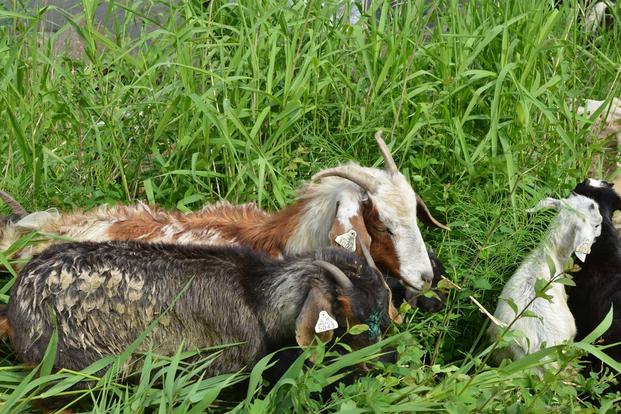The Coast Guard has decided to put a complete end to the practice of wounding and injuring animals for medical training following a temporary suspension last year, according to correspondence reviewed by Military.com.
The move was confirmed in a letter to Rep. Lucille Roybal-Allard, D-Calif., from Adm. Michael Ryan, Coast Guard deputy commandant for capability.
The letter, sent Oct. 30, 2017, and recently obtained by the organization People for the Ethical Treatment of Animals through a Freedom of Information Act request, reveals a tactical medical working group reviewed existing training practices for Coast Guard personnel and concluded that ongoing live-tissue training should be replaced by simulator training.
"The Deputy Commandant for Operations [Vice Adm. Charles Ray] immediately approved the Working Group's recommendation and announced the end of live-tissue training to all Coast Guard personnel on 28 June 2017," Ryan wrote in the letter. "I am confident that the advancements in medical simulation will increase the quality of tactical medical training of our Coast Guard members."
Roybal-Allard drew attention to the issue last April, saying Coast Guard officials had told her the service was observing a six-month suspension of the practice in order to study alternatives. In May 2017, Coast Guard Commandant Adm. Paul Zukunft appeared to voice support for ending live tissue training entirely in comments to a congressional panel.
"Like you, I found that -- quite honestly -- abhorrent in terms of meeting our mission requirements," he said, in response to a question from Roybal-Allard.
Coast Guard officials did not immediately respond to a query from Military.com on Tuesday about the letter and service planning regarding medical training.
The service may be the first to put a complete end to live-tissue training, valued for its realism.
In this form of training, pigs, goats and other animals are shot, stabbed or otherwise injured and then treated by military trainees. The animals are typically anesthetized during the training and euthanized at its conclusion.
Always controversial, the practice has gotten more rare in recent years.
A provision in the 2013 National Defense Authorization Act required the military to provide lawmakers with a written plan to gradually end the practice.
The Marine Corps prohibited live tissue training aboard installations in 2014, but still conducts it at approved off-site locations, officials recently told Military.com.
With some 8,500 animals still being killed every year for military medical training, two lawmakers attempted to require the end of the practice in the 2018 version of the NDAA. The measure was ultimately not adopted.
In a statement, PETA Senior Vice President Kathy Guillermo applauded the Coast Guard's decision to do away with live tissue training.
"We're grateful to Rep. Lucille Roybal-Allard, a leader with insight and heart, who understands that progress involves respect for animals and service members whose lives depend on modern simulation-based training," she said.
-- Hope Hodge Seck can be reached at hope.seck@military.com. Follow her on Twitter at @HopeSeck.












